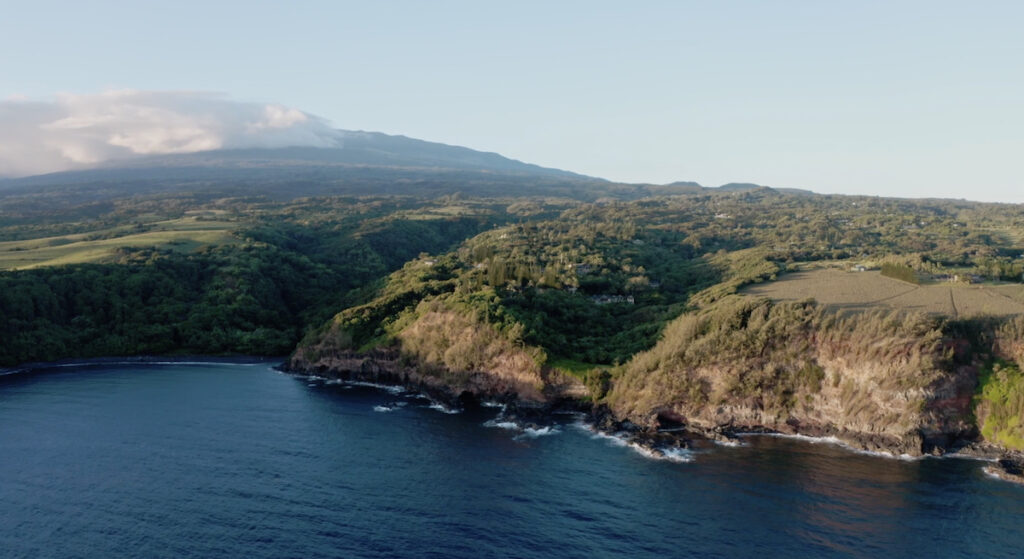
Hāmākualoa: The Birthplace of a Demigod
This post is from a series called Peʻahi Stories, a place- based literacy project launched in 2022.

In researching place at The Merwin Conservancy with the help of our friends, we have uncovered rich resources in the form of historical texts, oral histories, maps, and other primary source documents. In turn, we are weaving what we learn into our unfolding story, and following discoveries all the way to new questions.
Recently, neighbors with backgrounds in Hawaiian culture and mythology mentioned that our moku (land district) of Hāmākualoa is cited in the “Legend of Kana and Niheu” as the birthplace of the kupua (demigod) Kana.
Kana was born in Hāmākualoa, Maui to the goddess Hina in the form of rope and was nurtured into full potential by his grandmother Uli in Hilo (Hawaiʻi island) until he assumed a human form. In this new form his body was enormous, and as he grew, the house he lived in had to be lengthened from mountain to sea in order to contain him. His special powers allow him to stretch his body across the islands Hawaiʻi, step from one island to another, and wade through interisland channels.
In this legend, Kana rescues his mother Hina from a chief on Moloka‘i who had abducted her. He uses his powers to stretch across the sea and, with the help of his brother Niheu is able to transform the landscape where his mother is imprisoned and rescues her. From this changing landscape, it is said, the turtles in the sea are made. To read the entire legend from Abraham Fornander’s Hawaiian Antiquities and Folk-lore, click here.
Our curiosity was certainly sparked by learning of the connection of this legend to the place name of Hāmākualoa, all the more so knowing that the suffix “loa” translates as “long,” like the bodyform of Kana. While Hāmākualoa is only mentioned briefly in the legend as Kana’s birthplace, it stands out and gives us pause. What might the connections be?
This program is made possible in part by funding from Hawaiʻi Council of the Humanities through the Sustaining the Humanities through the American Rescue Plan (SHARP) with funds from the National Endowment for the Humanities (NEH) and the federal American Rescue Plan (ARP) Act.Any views, findings, conclusions, or recommendations expressed in this series, do not necessarily represent those of the National Endowment for the Humanities.